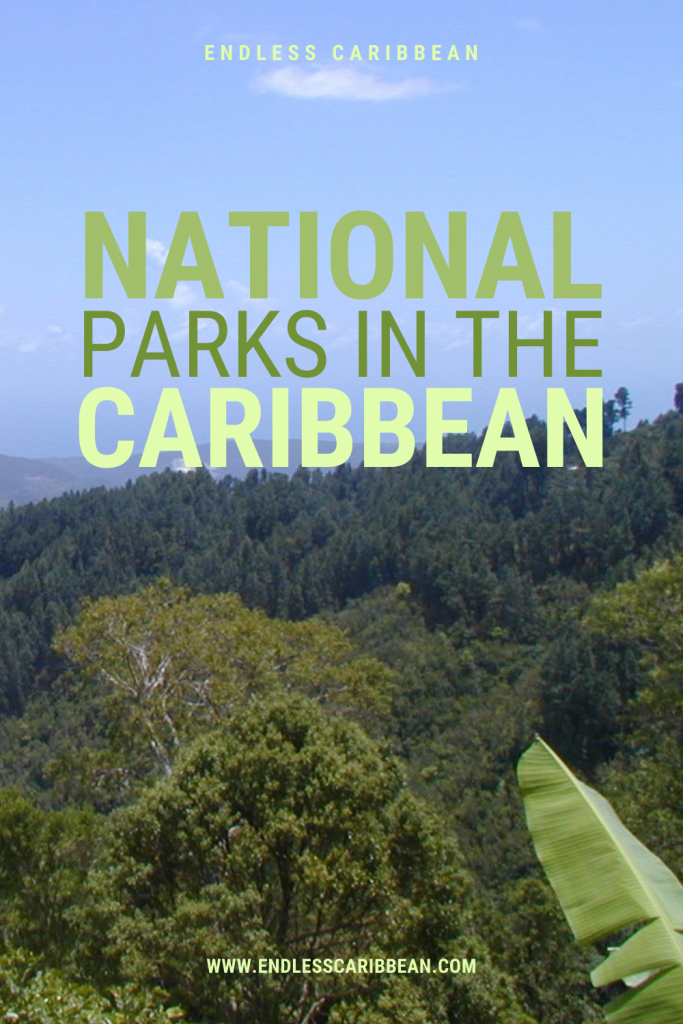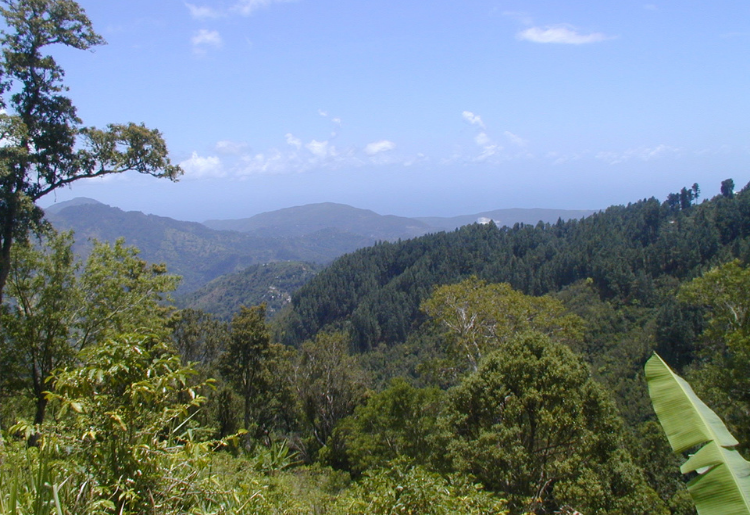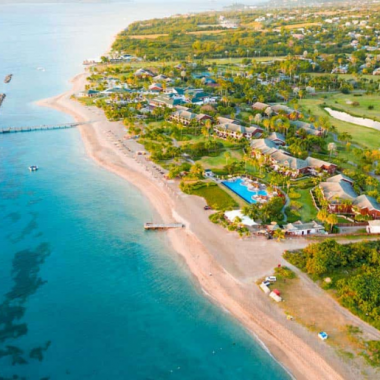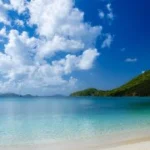The national parks in the Caribbean are special protected areas that are under the management of local governments and non-profit organisations. Special designations attached to these parks ensure that they will be preserved for many years, and current and future generations will benefit from them. Although the Caribbean’s national parks are in separate locations, they are some of the Caribbean’s most unforgettable natural wonders and attractions.
List of National Parks in the Caribbean By Country
Here is a nice list of the national parks in the Caribbean sorted by country.
Anguilla
There are two national parks in Anguilla. Both of them are managed by the Anguilla National Trust, who works to preserve the island’s built and natural heritage for generations to come. and they are
Big Spring National Park: Heritage park that’s only one of two petroglyph sites in Anguilla; 0.4 acres
The Fountain Cavern National Park: Heritage area with a preserved carving of the Taino deity, Jocahu
Antigua and Barbuda
The national parks in Antigua and Barbuda are remarkable treasures that highlight the diversity of the twin-island state.
Greencastle Hill National Park: Famous hill in Antigua with a spectacular set of megaliths
Nelson’s Dockyard National Park: The heart of Antigua’s nautical history; 630 acres
Fort Barrington National Park: Home of the historic Fort Barrington
Devil’s Bridge National Park: Location of the natural wonder known as Devil’s Bridge
Aruba
There is only one national park in Aruba, but it lends to a wonderful experience that shares valuable knowledge about the island’s history, geography and culture.
Arikok National Park: Diverse national park that takes up 20% of the land in Aruba; 7,907 acres
Bahamas
There are many national parks in the Bahamas, and as a result, authorities in the islands work hard to protect these land and marine treasures.
Abaco National Park: Tropical forest that is home to the endangered Bahama parrot; 20,500 acres
Andros North & South Marine Parks: Home to the third-longest barrier reefs in the world; 8,500 acres
Bahamas Clifton Heritage National Park: Historic cultural heritage site
Black Sound Cay National Reserve: Mangrove reserve and waterfront ecosystem; 2 acres
Blue Holes National Park: Protects blue holes and surrounding forests; 40,000 acres
Bonefish Pond National Park: Tidal mangrove ecosystem; 1,235 acres
Conception Island National Park: Bird sanctuary and green turtle breeding site; 2,100 acres
Crab Replenishment Reserve: Reproductive site for land crabs; 4,000 acres
Exuma Cays Land & Sea Park: Marine fishery reserve; 112,640 acres
Fowl Cays National Park: Home to coral reef, seagrass beds and rocky shore habitats
Graham’s Harbour Iguana & Seabird National Park: Protective area for the endangered San Salvador rock iguana as well as seabird colonies
Green Bay’s National Park: Protective area for the endangered San Salvador rock iguana
Harrold & Wilson Ponds National Park: Protected wetland in New Providence for birdlife; 250 acres
Hope Great House: Protects the remains of former sugar plantations; 3.6 acres
Inagua National Park: Breeding habitat for West Indian flamingos; 183,740 acres
Leon Levy Native Plant Preserve: Botanic garden in Eleuthera; 30 acres
Little Inagua National Park: Largest uninhabited island in the Caribbean;
Lucayan National Park: Underwater cave system; 40 acres
Moriah Harbour Cay National Park: Ecosystem between Great and Little Exuma; 27,286 acres
Pelican Cays Land & Sea Park: Underwater marine park; 2,100 acres
Peterson Cay National Park: Marine park on Grand Bahama; 1.5 acres
Pigeon Creek & Snow Bay National Park: Home to seagrasses, corals, sponges, and sea urchins
Primeval Forest National Park: Tropical woodland in New Providence
Ran Nature Centre: Tropical forest that features Grand Bahama’s original ecosystem; 100 acres
Southern Great Lake National Park: Mangrove ecosystem that is home to several species
Tilloo Cay National Park: Sea bird nesting site; 11 acres
The Retreat: Native woodland with rare palms: 11 acres
Union Creek Reserve: Marine turtle reserve; 4,940 acres
Walker’s Cay National Park: Underwater marine park with a barrier reef
West Coast Marine Park: Underwater marine park that is the anchorage location for Columbus’ first landfall on the Bahamas
West Side National Park: Scenic ecosystem consisting of both land and water; 1.5 million acres
Barbados
Although there are only a few national parks in Barbados, they are historic treasures. Currently, plans are in the works to designate additional areas in the island as national parks.
Farley Hill National Park: Scenic park on the grounds of the Farley Hill house
Queen’s Park: Park in heart of Bridgetown on the grounds of the former home of the Commander of the British Army
Belize
It is one of the most eco-loving destinations in the world, so it makes sense that there are many national parks in Belize. This list is not exhaustive, and we may have missed a natural park or two.
Bacalar Chico National Park and Marine Reserve: UNESCO World Heritage Site with a diversity of habitats; 15,530 acres
Billy Barquedier National Park: Protected nature habitat with a waterfall; 1,639 acres
Chiquibul National Park: Archaeological reserve and largest national park in Belize; 264,960 acres
Community Baboon Sanctuary: Protected habitat for the black howler monkey;
Elijio Panti National Park: Historic and diverse terrain with waterfalls and natural pools; 13,009 acres
Five Blues Lake National Park: Tropical forest surrounded by 4,000 acres of limestone hills; 10 acres
Gladden Spit and Silk Caye: Feeding ground for whale sharks and the loggerhead sea turtle; 25,980 acres
Guanacaste National Park (Belize): Forest area that is home to trees, animals and birds; 50 acres
Hol Chan Marine Reserve: Home of the Belize Barrier Reef and many marine mammals and fish; 1,920 acres
Laughing Bird Caye National Park: Protected island named after laughing gulls; 1.8 acres
Mayflower Bocawina National Park: Tropical forest with over 200 species of birds; 7,000 acres
Mountain Pine Ridge Forest Reserve: Oldest and largest protected area in Belize; 192,000 acres
Payne’s Creek National Park: Nature reserve with tropical forests and mangroves; 37,680 acres
St. Herman’s Blue Hole National Park: Home of the world-renowned Blue Hole; 500 acres
Sarstoon-Temash National Park: Diverse forest designated a wetland of international importance; 41,898 acres
South Water Caye Marine Reserve: Largest marine reserve and one the most diverse in Belize; 118,000 acres
Rio Blanco National Park: Isolated park with mountainous rainforest; 105 acres
Sapodilla Cayes Marine Reserve: Reserve consisting of sand islands, mangrove islands, and clear lagoons; 27,520 acres
Bermuda
Even the island is a modest 20.54 square miles, there are quite a few national parks in Bermuda which preserve the island’s natural beauty.
Bermuda Botanical Gardens: Largest local public garden with a park, greenhouses and historic buildings;
Bermuda Railway Trail National Park: Scenic path that follows an abandoned railbed from one end of the island to the other
Hog Bay Park: National park with forests, marsh land and coastline that attracts over 120 species of birds
Cooper’s Island Nature Reserve: Natural woodland once occupied by the US military; 12 acres
Ferry Reach Park: Diverse park with forests, a lake, beach, historic forts and walking trails; 64 acres
Paget Marsh: Nature reserve with mangroves, forests and a 400-foot boardwalk; 25 acres
Seymour’s Pond: Nature reserve that’s a haven for birds; 2.5 acres
Spittal Pond Nature Reserve: Largest natural park and wildlife sanctuary on the island with various habitats; 64 acres
Vesey Nature Reserve: Nature reserve with forests, quarries, and a limestone sinkhole; 8 acres
Bonaire
There are two national parks in Bonaire, which are protected areas that are managed by Stichting Nationale Parken Bonaire (STINAPA Bonaire), a non-governmental organisation.
Bonaire Marine Park: Marine park that encompasses all of the waters surrounding the island; 6,672 acres
Washington Slagbaai National Park: Natural, cultural and historical habitat for endemic and endangered species; 10,590 acres
British Virgin Islands
The national parks in the British Virgin Islands are natural assets that are interspersed among beautiful islands and cays.
Cam Bay National Park: Home to several birds and an area with shallow reefs and lagoons; 19.6 acres
Diamond Cay: Bird sanctuary that is home to several species of birds; 1.25 acres
Dead Chest National Park: Uninhabited area with underwater gems;
Devil’s Bay National Park: Picturesque area with some of the best beaches; 58 acres
Fallen Jerusalem National Park: Bird sanctuary with large boulders and coastal vegetation; 48 acres
Gorda Peak National Park: Highest point on Virgin Gorda and one of the last dry forests in the Caribbean; 260 acres
J.R. O’Neal Botanic Gardens: Garden oasis in the centre of Road Town; 2.87 acres
Little Fort National Park: Former site of a Spanish fortress; 36 acres
Little Tobago/ Great Tobago National Park: Two cays that are bird sanctuaries and stunning diving sites; 265 acres
Mount Healthy National Park: In-tact remains of an 18th century stone windmill that was part of a sugar plantation; 1 acre
Prickly Pear National Park: Small island that is home to several birds, and a popular spot for swimming and snorkelling; 243 acres
RMS Rhome Marine Park: First and only marine park with the best diving in the BVI; 800 acres
Sage Mountain National Park: Highest point in the BVI with a reforested farmland; 86 acres
Shark Bay: Coastal park on the northern coast of Tortola; 18.4 acres
Spring Bay National Park: Recreational area for picnics, games, swimming and snorkelling; 5.5 acres
The Baths National Park: Geological wonder with majestic granite boulders in Virgin Gorda; 7 acres
The Copper Mine: Historical site of an abandoned copper mine which thrived in the 18th century; 18.36 acres
West Dog National Park: Rugged area with steep cliffs that are a nesting ground for seabirds; 24 acres
Cayman Islands
There are two national parks in the Cayman Islands which are protected because of their significance in the islands’ history and future.
Barker’s National Park: First national park in the Cayman Islands, that is a prime recreational area; 277 acres
Queen Elizabeth II Botanic Park: Exotic garden with panoramic views and a lake
Cuba
The national parks in Cuba make up 10% of Cuban land and are protected by the state, for the benefit of the population.
Alejandro de Humboldt National Park (UNESCO): UNESCO world heritage site used for recreational activities
Caguanes National Park: Natural reserve with cays, swamps and mangroves
Cuchillas del Toa: Diverse habitat with forests, mangroves, coral reefs and a cave system
Desembarco del Granma National Park: UNESCO heritage site consisting of a rainforest, beaches, reefs, and caves
Guanahacabibes Peninsula: National park with mangroves and beaches
Jardines de la Reina: Reserve that consists of hundreds of cays and islands
Sierra Cristal National Park: The island’s first national park located in a mountain range
Sierra del Rosario: Biosphere reserve with tropical forests and many species of plants
Turquino (or Sierra Maestra) National Park: National park in the Sierra Maestra mountain range
Viñales Valley: UNESCO heritage site where tobacco grows
Curacao
The two national parks in Curacao which include over 6,200 acres of protected nature reserves are excellent examples of the beautiful nature of the island.
Christoffel National Park: Home to the Christoffel Mountain with spectacular views of the island
Shete Boka National Park: Seven inlets on the north coast with wooden bokas for viewing the ocean
Dominica
Dominica’s national parks are part of a well-functioning system to protect and preserve ecological subsystems on land and in the island’s waters.
Cabrits National Park: Protected peninsula on the north of the island with tropical forests and coral reefs
Morne Diablotin National Park: National park established primarily for the protection of the endangered sisserou parrot; 8,242 acres
Morne Trois National Park: The island’s first legally established national park named after the Morne Trois Pitons
Dominican Republic
The national parks in the Dominican Republic, which represent 12% of the country’s territory, provide state protection of endemic flora and fauna.
Isla Cabritos National Park: National park with low rainfall and many species of birds and reptiles
Jaragua National Park: Located in the south west and features mangroves, dry forests, thickets and birds
José Armando Bermúdez National Park: Mountainous area with forests of Creole pine, ebony and mahogany
José del Carmen Ramírez National Park: Oldest national park in the country, with many hydro-logical resources
La Caleta Underwater National Park: Popular underwater park to the east of Santo Domingo
La Isabela National Park: Site where the first European settlement in the New World was established
Los Haitises National Park: Remote diverse habitat in the north east of the Dominican Republic
Monte Cristi National Park: Home to the Morro de Montecristi plateau and the Seven Brothers Cay, a renowned spot for bird watching in the Dominican Republic
Nalga de Maco National Park: National park with two mountain ranges which include the Nalga de Maco peak; 68,695 acres
National Park Cueva de las Maravillas: Home to the Cave of Wonders, which has preserved paintings made by Taino aborigines; 1,112 acres
Parque Isabel de Torres: One of the smallest parks in the country with a replica of the Christ of Corcovado de Rio de Janeiro
Parque Nacional del Este (Eastern National Park): Coastal eco-system with protected forests, islands, keys, lagoons and coral reefs
Sierra de Bahoruco National Park: Largest protected area in the Dominican Republic
Sierra Martín García National Park: Protected area in the southwest with cloud forests and over 100 species of birds; 78,950 acres
Valle Nuevo National Park: Ecotourism area that’s popular for camping, hiking and watching wildlife
Grenada
The national parks in Grenada are part of a plan to manage, preserve and protect the natural heritage resources in Grenada and Carriacou.
Grand Etang Lake and National Park: Famous trekking location that is home to the Grand Etang crater lake and a tropical rainforest
High North Peak National Park: Famous eco reserve located on the island of Carriacou
Levera National Park: Scenic coastal area with a mangrove swamp, lagoon and protected beaches
Mount St. Catherine Forest Reserve: Second largest forest reserve on the island, where the highest point on the island can be found
Guadeloupe
There is one national park in Guadeloupe, but it has the distinction of being the first French national park in an overseas territory.
Guadeloupe National Park: Valuable eco-system that consists of a tropical rainforest, coastal forest and mangrove in the adjacent Grand Cul-de-Sac Marin Nature Reserve
Guyana
The national parks in Guyana are symbols of the country’s commitment to creating a healthy quality of life for its people and preserving and protecting its natural resources.
Guyana National Park: Located in the heart of Georgetown, the park is popular for recreational activities such as playing sports and exercising; 57 acres
Kaieteur National Park: Nestled in the Amazon jungle and home to the Kaieteur Falls, the world’s longest single drop waterfall
Kanuku Mountains: A group of mountains in the Upper Takutu-Upper Essequibo region consisting of rainforests, rock formations, caves and waterfalls; 1,482,632 acres
Haiti
The national parks in Haiti are managed by the Haiti National Trust, which establishes long-term protective measures for parks and rich bio-diverse areas.
Deux Mamelles National Park: Mountainous area that features original forest and limestone rock; 5597 acres
Grand Bois National Park: Isolated mountain region and Haiti’s first nature reserve; 914 acres
Grande Colline National Park: Mountain range in the south-west with a highest peak of 2025 meters in elevation
Île-à-Vache National Park: Small island with swamps, mangrove forests and a lagoon; 12, 850 acres
La Visite National Park: Diverse forest in the south of the island; 7,680 acres
National History Park – Citadelle, Sans-Souci Palace: Heritage site with Haitian monuments that date back to the 19th century when Haiti gained its independence
National History Park – Matheux:
Parc National Naturel Foret des Pins: Important reserve with endangered and endemic species of pines; 34,671 acres
Macaya National Park: Haiti’s last primary forest with various species of plants, mammals and amphibians; 13,440 acres
Three Bays National Park: Protected marine area with many ecosystems and at-risk species; 86,332 acres
Jamaica
There is only one national park in Jamaica, but the country has almost 250 protected areas. These nature sanctuaries are managed by government and non-governmental agencies.
Blue and John Crow Mountains: Natural sanctuary and site of the Blue Mountain Peak that was once home to the Windward maroons
Martinique
The sole national park in Martinique is one the most memorable national parks in the Caribbean. It was the first reserve ever created on a tropical island.
Martinique Regional Nature Park: Eco paradise for nature lovers with several natural sites include the Pelee Mountain volcano; 155,676 acres
Puerto Rico
There is only one national park in Puerto Rico, but there are 36 nature reserves and 19 state forests. These great outdoor spaces are fascinating ecosystems with several varieties of plants and animals.
San Juan National Historic Site: Historic area that preserves natural and cultural treasures
Saba
There are two national parks in Saba. Both parks are important aspects of the island’s preservation of their environment and surroundings. Further, they protect the island’s lowest and highest points.
Mount Scenery National Park: Comprises about 25% of the island’s land space and includes the Mt. Scenery volcano
Saba National Marine Park: Self-sustaining marine park established to maintain and preserve the island’s marine resources; 0.32 acres
St. Barthelemy
The sole national park in St. Barthelemy is a nature reserve that was founded in 1996. Its aim is to protect the island’s underwater eco-systems.
The Nature Reserve of St. Barthelemy: Marine reserve that protects five sectors around the island; 2,965 acres
St. Eustatius
The national parks in St. Eustatius are managed by the St. Eustatius National Parks Foundation, which aims to preserve the island’s treasures to pass on to future generations.
Miriam C. Schmidt Botanical Garden: A haven that celebrates the island’s natural flora and fauna; 13 acres
Quill – Boven National Park: Protects unique biodiversity and includes a dormant volcano and trekking trails; 1,334 acres
St. Eustatius National Marine Park: Protective habitat that extends around the entire island and prohibits fishing and anchoring in some areas; 6,795 acres
St. Kitts & Nevis
There are two national parks in St. Kitts and Nevis which, when combined with the other protected areas, signify the islands’ commitment to preservation of the islands’ treasures.
Brimstone Hill Fortress National Park: Preserved 17th and 18th century military architecture that was was built by enslaved Africans during the slave trade; 38 acres
Central Forest Reserve National Park: First national park in the islands to be designated for biodiversity conservation and sustainable development
St. Lucia
Although there is only one national park in St. Lucia, there are many other sites and protected areas with nature reserve designation.
Anse la Liberte: Historic site that was the venue for post-emancipation celebrations; 133 acres
Marina Islands Nature Reserve: Twin island wildlife habitat with endemic species and unique plants; 29 acres
Morne Fortune: Historic site that was once used to defend the Castries Harbour
Morne Pavillon Nature Reserve: Protected site with views of Martinique and the rest of St. Lucia; 18 acres
Pigeon Island National Park: The only national park in St. Lucia, Pigeon Island is a small island that was first occupied by the Caribs; 44 aces
Point Sables Environmental Protection Area: Coastal strip with natural, cultural and historical assets
St. Vincent and the Grenadines
In addition to the national parks in St. Vincent and the Grenadines, there are 35 protected areas consisting of forest reserves, wildlife reserves, marine parks and other reserves.
Chatoyer National Park: National park named in honour of Joseph Chatoyer;
La Soufriere National Park: Home to the only live volcano in St. Vincent, La Soufriere
Layou Petroglyph Park: Historic Amerindian site with ancient petroglyphs
Suriname
Although this list of nature reserves and national parks in Suriname may appear short, these habitats occupy at least 14.5% of the country’s land space.
Brownsberg Nature Park: Nature reserve in the the Guianan forests ecoregion with approximately 1,450 species of plants and 350 species of birds; 29,653 acres
Central Suriname Nature Reserve: Tropical forest in west-central Suriname, that protects the upper watershed of the Coppename River and the headwaters of other rivers; 3,953,686 acres
Galibi Coppename Nature Reserve: Famous nesting site for endangered turtles located in the north east of Suriname
Trinidad and Tobago
The national parks in Trinidad and Tobago, largely consist of forest and protected areas that are critical to national sustainable development in the islands.
Aripo Savannas Scientific Reserve ESA: Tropical savannah system with 6 vegetation communities, 457 plant species and 5 resident species of creatures; 4,418 acres
Caroni Swamp: Prohibited area with diverse ecosystem of mangroves, marshes, lagoons and mudflats; 8,051 acres
Main Ridge Forest Reserve: Oldest forest reserve in the western hemisphere that is a popular ecotourism site for trekking, mountain biking and bird watching in Trinidad; 9,729 acres
Matura National Park ESA: Protected area in the north-east of Trinidad with populations of ocelots, anteaters, river otters and Red Howler monkeys; 22,239 acres
Nariva Swamp ESA: Ecological area with over 179 species of birds, 45 species of mammals; and 5 types of wetland vegetation; 28,029 acres
Trinity Hills: Forest area located on the south-east of Trinidad, with mammals and birds, including the endangered Trinidad Piping guan; 28,479 acres
Turks and Caicos Islands
The national parks in the Turks and Caicos Islands received their designations after a process that identified the unique ecosystems and terrains on the islands.
Princess Alexandra National Park: Protected coastal and marine area off the north coast of Providenciales
Chalk Sound National Park: Natural turquoise lagoon with hundreds of tiny islands, that is protected from motor-powered watercraft
Northwest Point National Park: Prime spot for birdwatching in the Turks and Caicos with wetlands, salt ponds, mangroves, and underwater cave systems
Frenchmans Creek and Pigeon Pond Nature Reserve: Remote and largely inaccessible nature reserve that is home to birds, crustaceans, turtles, sharks and other wildlife.
United States Virgin Islands
The national parks in the United States Virgin Islands are natural ecosystems and architectural treasures that challenge the imagination.
Hassel Islands (Virgin Islands National Park, St. Thomas): Small island on the west coast of St. Thomas with 19th-century ruins and fortifications
Salt River Bay National Historic Park and Ecological Preserve (St. Croix): Important archaeological site with preserved evidence of indigenous settlements
Virgin Islands National Park on (St. John): Home to historic plantations, ancient petroglyphs and hidden marine life
Articles About the National Parks in the Caribbean
Here are some more great articles about the national parks in the Caribbean.
Royal Caribbean: Best National Parks and Forests in the Caribbean
Mikah Meyer: Top 10 Things To Do in Caribbean National Parks
Go Dominican Republic: National Parks and Protected Areas
Government of the Bahamas: National Parks
Princess: Virgin Islands National Park at St. John
Wheeler and Brand: British Virgin Islands National Parks
Image Credit: The Jamaica Tourist Board












